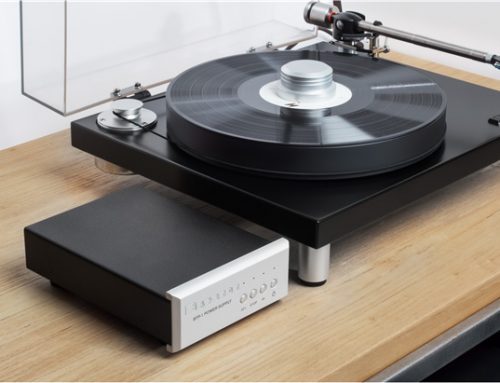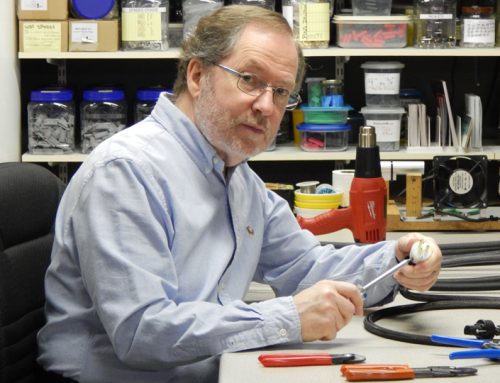Rated Power
Amps are usually specified in terms of watts per channel (wpc). But you need to look closer. Is that at one frequency (say 1kHz) or across the full bandwidth (say 20 – 20,000 Hz)? And is that driving an 8 ohm loudspeaker or 4 ohms? An amp will usually offer more power into lower impedances and a perfect amp will double the wpc measure each time you halve the impedance of the load. Most real world amps can’t do this – they can run into trouble when the speaker’s impedance drops. Sadly, you can’t rely on the single published impedance number for each speaker either, since the impedance will often vary widely with the frequency of the sound. You may see a speaker spec that says Nominal Impedance 8 Ohms, Minimum impedance 5 Ohms (30 – 30,000 Hz), and this is far more helpful. The only real way to tell is to try the amp with the speakers, but be aware that as you move up the price curve, the ability to drive difficult speakers (inefficient speakers with low impedance somewhere in the spectrum) will often improve considerably, and this is a major reason to cough up the extra money. You have to consider the two components together. An amp with high output is not just good for playing music at high levels, it is equally important in allowing the sudden dynamic peaks in acoustic music to pass without compression or distortion. This is less of a factor in pop music, which is often compressed during the mastering process, and more of a problem in classical music where such practices are less common. The Simaudio Moon 600i is a first class integrated stereo amp which doubles its maximum output from 8 ohms (125wpc) to 4 ohms (250 wpc).
Damping Factor
This measures the degree of control an amplifier has over a speaker, and is most significant in the lower octaves. Again, some speakers are easy to control and will work well with almost any amp within their decibel range. Others require support from the amp to control reverberations near the resonant frequency of the speaker after a tone is played. Solid state amps often score higher here than tube amps. The higher the number the stronger the grip. A score of 50 or higher indicates that the output impedance of the amplifier (which again varies with frequency) is low compared to the internal resistance of the speaker and the speaker cable. The Simaudio Moon 600i scores over 267.
Distortion
There are multiple measures of distortion and most modern amps measure very well, but the reading is often less important than the type. Even order distortion, common in most tube circuits, may actually add warmth to the sound, while odd order distortion can sound harsh. Distortion may vary with output and frequency. Some of the best sounding amps do not measure all that well so I would not pay much attention to this spec. The reason is that by applying larger amounts of feedback in a circuit, you can reduce the measured harmonic distortion level, but you introduce all sorts of other problems at the same time. Some amps, in particular the class of low power tube amps known as Single Ended Triode (SET) amps are loved by many for their warm rich and dynamic sound with very efficient speakers, but can measure hundreds of times worse than conventional amps. The above mentioned Simaudio Moon 600i measures at less than .015% at 1 watt from 20 Hz to 20 kHz, and less than .04% at its maximum rated output across the audio band, which is excellent.
Amplifier Class
The best amps generally belong to Class A in which the amplifying device operates over the entire input cycle. You will often find this type of amplification in low level amplifying stages – say in the preamplifier or in the output stage of a CD Player or DAC. But Class A is not often seen in the power amplification stage, especially in high power amps, because it is very inefficient and throws off large amounts of heat. You’ll see it in very expensive amps, or in some low power amps, but you’ll also see relatively large power supplies and massive casing designed to dissipate the heat generated. Price per watt can be very high.
In Class B operation, each amplifying device deals with just half of the waveform, and the devices are used in pairs (push-pull). This is much more efficient, but it also leads to higher distortion, especially in the crossover region between the two halves of the wave form. The ear is particularly sensitive to this type of distortion. In practice, the most common form of amplification combines Class A and Class B together, so that at low output the device may operate entirely in Class A, but when the output level increases it will switch to a class B operation. The better the amp, the higher the switching threshold. A fine Class AB amp may put out 8 or 10 watts in Class A before gradually switching over.
Pass Labs offers both options. Its INT-30A offers 30 glorious watts of Class A output, while in the same chassis, the INT-150 is a 150 watt Class AB amp. Apart from the power output, both amps offer identical specifications, and both are truly excellent examples of their type.
Many amps today run in Class D, which is often mistaken for Digital amplification. It is still an analog amp but it uses a high speed switching mechanism instead of the linear amplification of Class A, B or AB and achieves very high efficiency. Opinion is divided as to whether Class D amps can achieve the sound quality of a good Class AB amp, let alone a Class A amp, but because they are so efficient, power supplies can be much smaller, heat dissipation requirements are low and therefore it is much cheaper to implement and can be expected to take an increasing proportion of the market. Bass reproduction is much praised but considerable criticism has been made of the higher frequencies of some popular Class D modules. The latest generation of Class D amps is much more competitive than the earlier components. Class D is especially popular in multichannel amps since a good Class AB amp would be much larger and heavier. The Pioneer Elite SC-68 THX Ultra 2 Plus 9-channel receiver is a great example.






